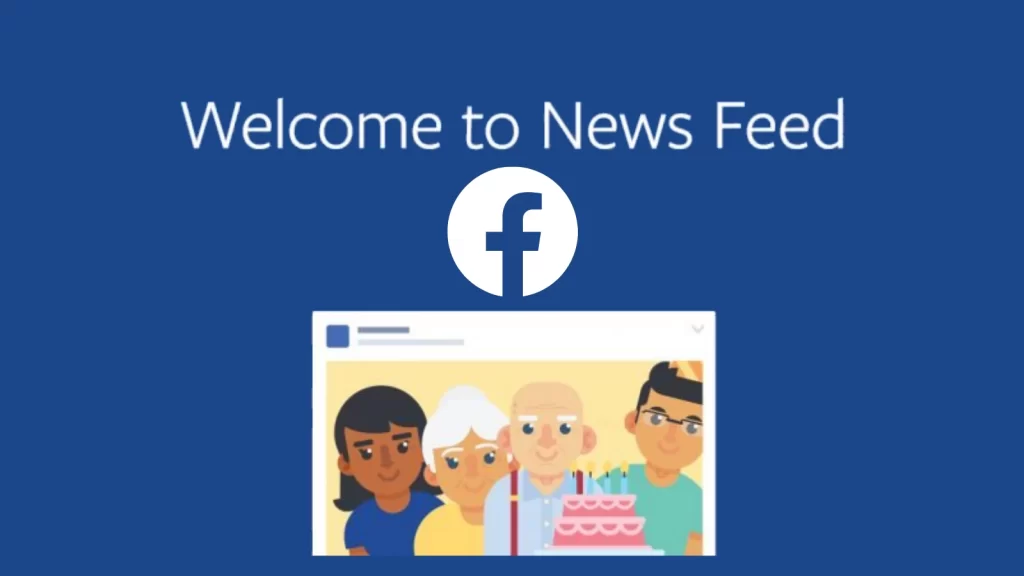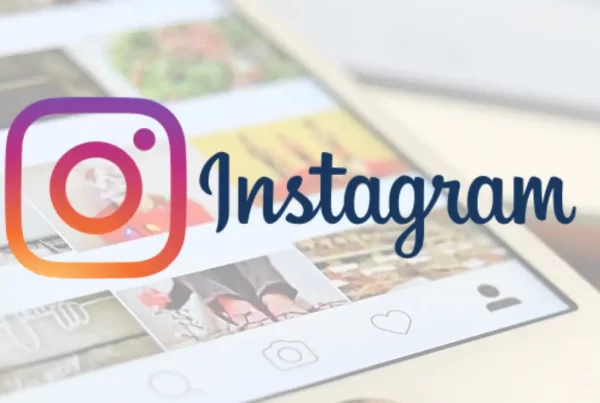Last Updated on 2 years ago by Gülenber Han
The Facebook algorithm rates all available postings that potentially appear in a user’s News Feed depending on the likelihood that the user would react positively to the post.
Facebook now rates and prioritizes information shared by friends over content produced by publishers, with an emphasis on what the algorithm defines as ‘meaningful interactions,’ with responses to individual user surveys also playing a part in what they see and don’t see.
To achieve efficient performance while keeping a great ad experience, the algorithm tries to balance the interests of both the advertiser and the consumer. A social media agency helps you to adapt to these algorithms.
What is the Facebook Algorithm?
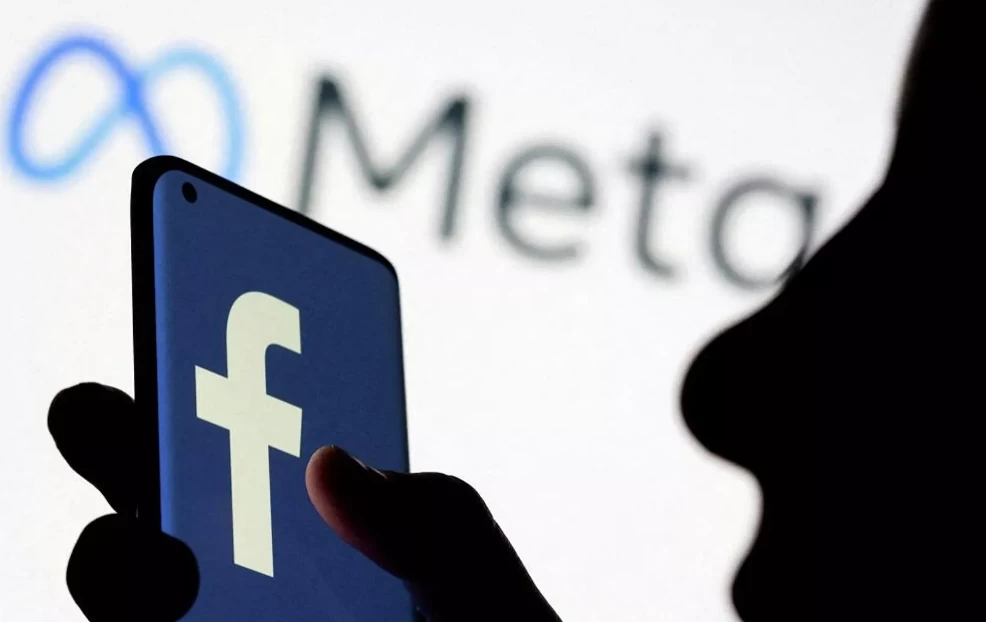
The Facebook algorithm decides which posts individuals see and in what sequence they view them every time they check their Facebook page.
Every post is evaluated by the Facebook algorithm. It assigns a score to each post and then organizes them in decreasing, non-chronological order of interest to each particular user. This technique is repeated every time a user (there are 2.9 billion of them) refreshes their feed.
We don’t know all of the specifics of how the Facebook algorithm determines what to display to users (and what not to show people). But we do know that, like any social media recommendation algorithm, one of its purposes is to keep users on the network so that they see more advertisements. Facebook was chastised in 2021 because its algorithm prioritized contentious content. Controversy frequently generates the most participation and can even lead to the ‘compulsive use’ of the site.
Even as early as 2018, opponents were concerned that the Facebook algorithm would increase indignation, division, and political polarization while also encouraging disinformation and questionable content.
Facebook, for its part, claims that the algorithm is all about assisting users in ‘discovering new material and connecting with the topics they care about the most,’ while ‘keeping spam and misleading information at bay.’ As you’ll see below, recent Facebook algorithm tweaks have sought to address content and privacy issues.
The History of the Facebook Algorithm

The Facebook algorithm is not fixed. Meta has a whole staff dedicated to artificial intelligence and machine learning. One aspect of their effort is to enhance the algorithms that connect Facebook users with the most relevant material. Facebook algorithm is always being improved, but do you know how it all began?
Facebook Algorithm Changes:2006
In September, Facebook officially launched the News Feed, as well as status updates. Before the News Feed, signing onto Facebook only gave you access to your profile page, which you could change and customize, but you had to explicitly search for other people’s pages to view them. The site was revamped with the introduction of the News Feed to show you other people’s status updates and posted photographs. The profile page would also display a mini-feed of changes and was dubbed ‘the wall.’
Facebook Algorithm Changes:2007
In November, the Like Button function has been introduced. This is the first time Facebook has dabbled with an algorithm. With the addition of the ‘Like’ button, users now have a more convenient means of interacting with the posts of others. Before the ‘Like’ button, users had to remark on a status or post to communicate with the other user. Furthermore, with the addition of the X out option, Facebook may develop based on what you ‘like’ and what you X out. This Facebook algorithm caused your News Feed to eventually prioritize content that Facebook believes would be of interest to the particular user.
Facebook Algorithm Changes:2009
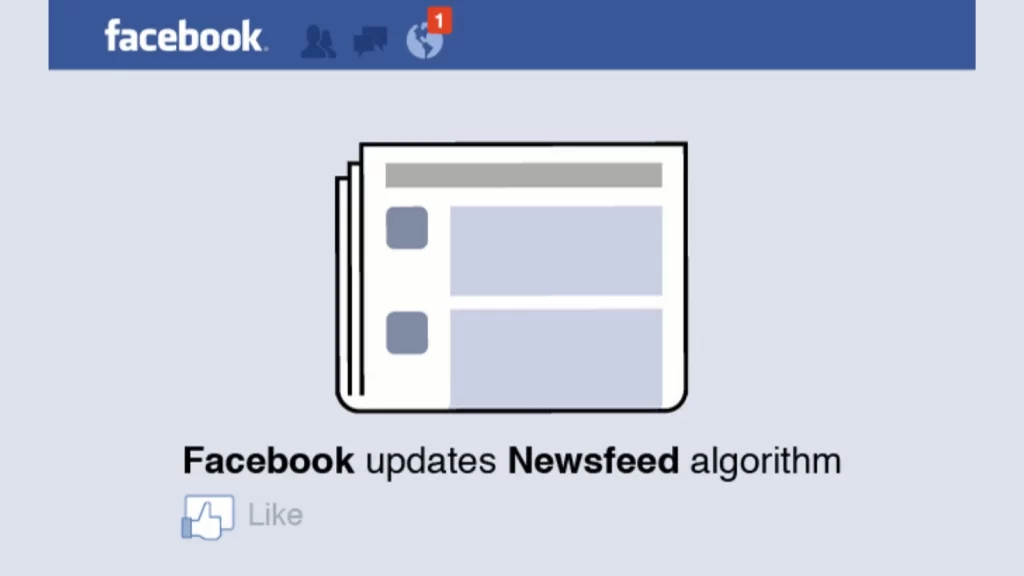
Filters were added to Facebook’s platform in March. This gave individuals greater control over what they saw. Because the filters were new and relatively difficult, many users neglected to utilize them, albeit progressive acceptance of the filters occurred over the next several months. This update also brought with it the opportunity to fine-tune your status updates and integrate multimedia with your messages. You may even create customized buddy lists that would allow you to only receive updates from select people.
This was the most significant adjustment yet. Facebook has introduced a new default sorting order. Previously, the updates/photos were listed in reverse chronological order. The new ranking was determined by public vote. Engagement on each post was used to determine popularity. The higher the post displayed in the News Feed, the more interesting it was. This upgrade drew criticism from users who liked the previous chronological default and from individuals who did not want their relationship status updates to be cycled across numerous News Feeds due to the post’s increased popularity.
Facebook Algorithm Changes:2011
In response to users’ complaints over the 2009 upgrade, Facebook combines the two types of News Feeds into a single News Feed. Facebook wants its users to be able to see exactly what they signed up for. ‘When you visit Facebook, you should see the items you’re most interested in, such as status updates from your family and closest friends,’ Facebook wrote at the time. They were aware that users did not always log in, so they modified their News Feed appropriately. They wanted to offer all individuals the most relevant content at all times by using an updated News Feed algorithm. Users who had been accustomed to the previous upgrade experienced considerable difficulties transitioning to the new update.
Facebook Algorithm Changes:2013
Facebook altered the design of the News Feed to improve its aesthetic look to increase user engagement.
Facebook has made modifications to its News Feed ranking algorithm. One significant adjustment provided posts that had previously gone unnoticed by people a second chance to be seen. Another significant change provided more weight to each user’s top 50 network interactions in selecting what they see in their feed.
Facebook Algorithm Changes:2014
In April, Instagram (owned by Facebook) received its first Facebook algorithm upgrade. The ‘Explore’ (or ‘Popular’) tab has been modified to display photographs and videos that are personalized for each user. Previously, the tab just displayed the most popular Instagram posts from all users.
Once again, Facebook listened to user complaints and built an update that made a significant effort to remove ‘click-bait’ postings while also assisting users in seeing shared links in the optimal format. ‘click-baiting’ refers to postings that include a title designed to entice users to click on a link. ‘You won’t believe what comes next!’ is a popular headline featured on ‘click-baiting’ links. Such blatant techniques to generate online traffic have swiftly irritated users. Facebook now tracks how long a person spends on a link they visit. If a user immediately returns to Facebook after clicking a link, Facebook knows that the link was not what the user was looking for, which is often the case with ‘clickbait’ links. The amount of likes and shares a link receives on Facebook will also assist in the weeding of these links. Liked and shared links are not often ‘clickbait.’ Instead of being hidden in photo captions or status updates, shared URLs will now be presented in the standard link style. This link type will also preview the opening of the article, which will help people decide whether or not to click the link.
Facebook announced in September that view numbers will now be shown alongside videos. Facebook wants the rest of the world to know that YouTube isn’t the sole dominant force in internet video. Facebook video views have increased throughout the years, surpassing 1 billion views each day. The latest ALS Ice Bucket Challenge fad has also significantly increased Facebook video views. Facebook intends to demonstrate to digital video advertisers that Facebook is an excellent platform for running video advertising. Facebook videos originate from a range of sources, including users, pages, and prominent personalities. In addition to adding view counts to its films, Facebook stated that recommended videos would now surface once a user has completed viewing a video. This will only help to raise the number of video views on Facebook, cementing the social media platform’s position as one of the main places for online videos.
Facebook has included a keyword search in December, which allows users to look for prior postings by utilizing phrases and the names of their friends. Users may now perform a simple search to find old archived content that was previously shared with them. The search results will only show posts and photographs that you have shared with others, such as in your News Feed. Similarly, only posts you’ve shared with friends will appear in their searches. You may choose your audience for each post you create; if your post is set to Public, anybody who searches for it will be able to find it. If only your friends can view your postings, only your friends will be able to locate them using general searches. You can also be found if other people have tagged you in their posts or photographs. If you want to remove yourself from someone else’s post, you can edit the post and request that your tag be removed or that the post be removed from Facebook entirely.
Facebook offers in December a new search engine designed exclusively for locating the apps you’re looking for. There is now a “Find Apps” bookmark in the mobile navigation menu that displays a specific feed of paid app adverts. App stores such as Apple and Google have failed to deliver a feed of apps tailored to the user’s interests. Facebook’s new App Ad Feed shows advertising that is tailored to Facebook users’ habits, likes, and activities. The majority of app stores’ app discovery is severely broken. With Facebook’s new App Ad Feed, you can now search for applications that have been hand-picked for you.
Facebook Algorithm Changes:2015
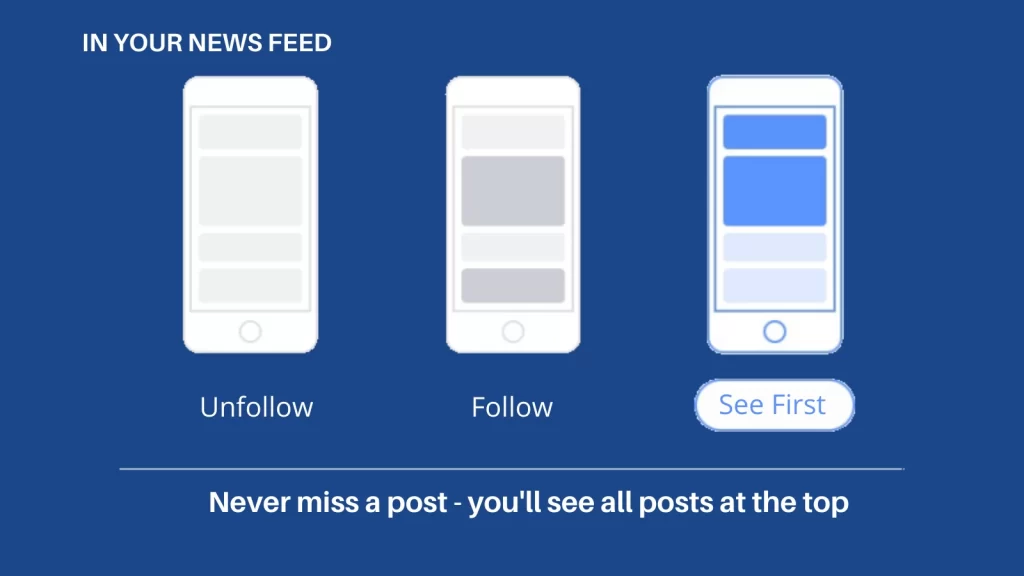
In January, Facebook recently polled 500,000 users and determined that the great majority of those polled preferred to see more postings from friends and family over promotional ones, even if they were from a Page the user liked. Beginning in January, Facebook will start penalizing Pages that publish posts that encourage followers to buy a product or download an app, enter a contest or sweepstakes with no context, or write posts that utilize the same terminology as published advertising. ‘While Pages who post a lot of the content we mentioned above will experience a large decline in distribution, the majority of Pages will not be impacted by this change,’ Facebook added.
In January, Facebook has recently made a concerted effort to limit the number of fake links in your News Feed. This includes postings you create or links you share that appear to be fraudulent. When you come across a problematic post, you may now report it as a ‘fake news article.’ Once a post has been reported as ‘false’ by a large number of people, its circulation will be drastically decreased. Facebook will not seek to remove fake posts or analyze the integrity of its content; nevertheless, a frequently false-reported post will have a top annotation stating that many people have claimed that the post is false.
In April, Facebook attempted to listen to its users who wanted to see postings from their friends rather than Pages or promotional messages. Facebook began cracking down on Pages that publish ‘click-bait’ articles or postings with the express purpose of selling a product in January. Facebook is now concentrating on prioritizing posts from people you care about the most. To put it simply, users will now see more posts from close friends in their News Feed than ones from Pages they follow.
In May, Facebook rolled out a new feature that allows users to quickly and easily share links in their posts and status updates, especially on mobile devices. This new feature is presently only available to a limited number of customers, but it is expected to be available to all users very shortly. Instead of copying and pasting a link, users may now click the ‘Add Link’ option and then search for the article or post they want to share using keywords. The popularity of the article or post on Facebook is utilized to rank the results, which contain data not used by Google in their search results.
Beginning in May, iPhone users will be able to access a new Facebook tool called Instant Articles. Popular publications such as BuzzFeed, the New York Times, and National Geographic will have their content available and mobile-friendly within the Facebook app. This implies that readers will no longer have to click on a link to these articles while the site loads. When a user clicks a post, he or she will have immediate access to Instant Articles. The article will be coded and structured specifically for mobile devices. Publishers will also be able to design their covers for stories that will show in News Feeds.
Facebook has officially verified that GIFs will now be supported in the News Feed. Initially, Facebook made a concerted effort to avoid GIF support, believing that it would clog the News Feed page. Users may now insert a GIF link from an external site (such as Giphy, Imgur, Tumblr, and others) into their post, and Facebook will animate the GIF after the post is published in the News Feed. GIFs will play in the News Feed based on your current video playback settings. Despite the fact that this statement was made around the end of May, the upgrade will not be available to all users and Pages right away. Instead, the update is still being rolled out gradually throughout June.
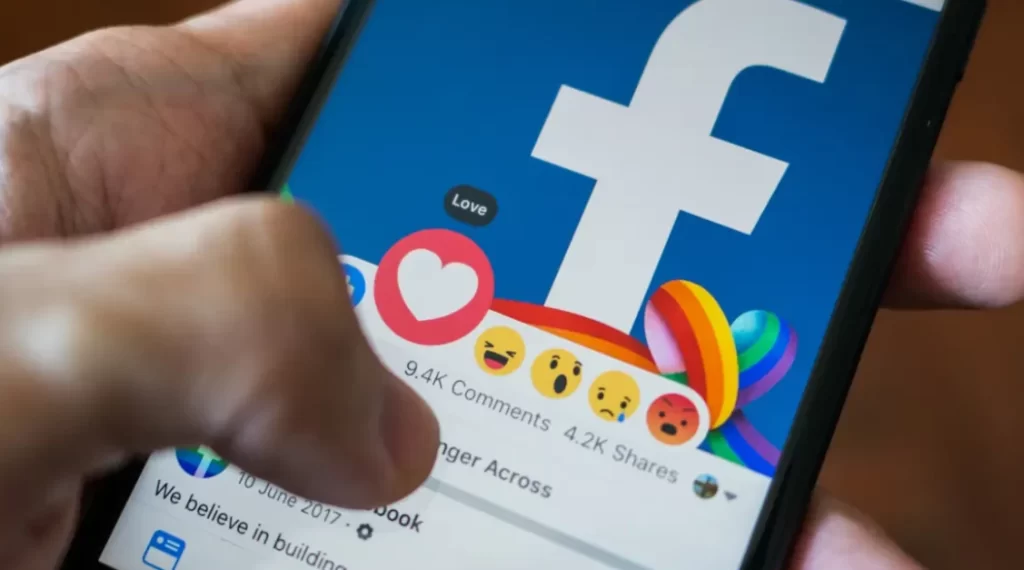
Facebook has traditionally styled users’ News Feeds depending on the likes, comments, and shares of others. However, Facebook has discovered through research that many users want to read current news pieces that may or may not garner likes, comments, or shares from the users’ friends. Facebook will now track how much time users spend watching certain stories. Though time spent on a story can be affected by a variety of circumstances (internet speed, length of post, etc.), Facebook will compare how much time you spend on a story to other items in your News Feed. If you spend more time on a certain story or post, Facebook will most likely show it in your friends’ News Feeds.
Facebook has announced that it will add a Buy Button to businesses using Shopify’s eCommerce platform. This implies that users will be able to buy anything immediately from the Facebook News Feed without having to visit another app or website. Those who use Shopify for their eCommerce will have the choice of sharing their items organically through their Facebook Pages or a sponsored marketing campaign. The addition of a Buy Button should encourage Shopify businesses by providing a quick and easy option for their clients to purchase a product through Facebook. Users can pay using the same payment method they previously registered with Facebook, or they can enter their payment information during the checkout process.
Facebook will push out this new update, which will account for videos seen with audio or in full-screen mode, over the following two weeks. According to a recent poll, many viewers will find a video of interest without liking, commenting, or sharing it with their friends. As a result, Facebook will track additional types of video interaction, such as turning on audio or switching to full-screen mode. There is no evidence that “major changes in distribution will occur as a result of this upgrade.” Furthermore, this upgrade does not imply that consumers will see more videos in their News Feed, but rather that those who currently interact with video-related material will see more of it.
When Facebook introduced See First to its News Feed Preferences, they said the change would have no impact on marketers, which may not be correct. If Pages can be included in a user’s See First selections, there is a huge opportunity for increased purchases, site traffic and participation, and brand visibility. However, there may be some repercussions for mid-level Pages that use sponsored marketing campaigns to increase Likes. The importance of a Like for Pages may be dwindling, particularly if such Pages are not usually favored in users’ See First. Marketers will almost certainly need to rethink their strategy to be included in more consumers’ See First selections.
To compete with Google and Twitter for hot news items, you can now search any news topic on Facebook and obtain a range of search results, including postings from individuals not on your Friends list and Pages you haven’t liked. The information in the search results will be drawn from Facebook’s 2 trillion postings. This upgrade will most likely encourage people to publish more regularly about human and global events, similar to how Twitter works.
Facebook Algorithm Changes:2016

Historically, Facebook publishers struggled to reach their intended audience organically, owing mostly to the Facebook algorithm. This new feature dubbed the Audience Optimization tool, enables publishers to specify preferences to target a specific audience based on interests, demographics, and geographic location. Publishers and marketers on Facebook may use this new tool to reach their target demographic organically and then track how well their posts work.
This upgrade demonstrates that Facebook is always listening to its users and working to enhance the user experience by prioritizing and upgrading the News Feed. With this latest upgrade, Facebook will assess the chance that users will rate a post highly or the likelihood that users will connect with a post by liking, commenting, or sharing. These posts are then pushed to the top of the user’s News Feed. These two criteria were identified during a large study done by Facebook in which users specified what they like to see at the top of their News Feeds. The upgrade should have little effect on Pages; nonetheless, some Pages may see a minor increase in referral traffic, while others may see a fall in referral traffic.
Facebook has been tracking how long people watch live-streaming videos in their News Feeds, and it turns out that live videos are seen three times longer than previously recorded and posted ones. Based on this data, Facebook will start favoring live video in users’ News Feeds. Previously, Facebook highlighted articles that it judged “excellent,” not necessarily the most recent. That has changed as a result of this live video update. This change allows Facebook to keep up with Twitter’s real-time postings, which include Periscope videos.
Another News Feed upgrade that will affect the priority of what appears at the top of your News Feed. Interacting with a post (liking, commenting, or sharing) is an excellent sign of what users are interested in; but, it is not the only approach. Users are less likely to interact with a depressing news story or a serious current event, but it does not imply they do not want these stories on their News Feeds. Facebook will now calculate the prospective interest in a post based on the following factors: user interest in the creator, post-performance among other users, the author’s historical content performance, the sort of post the user prefers, and the post’s date.
Facebook has been infamous for being riddled with clickbait links to articles and websites, but because of Facebook’s desire to enhance the sort of information posted on its network, this may be changing. Some websites solely worry about link clicks, even if the user exits the page shortly after clicking the link. Facebook will now track how long you spend on a shared link, whether it’s an Instant Article or another site. This should start to filter out clickbait URLs that don’t contain relevant material. Furthermore, Facebook is considering penalizing Pages that publish too frequently. Marketers will find this beneficial when developing their Facebook posting strategies.
Following a large user survey, Facebook made a minor tweak to the Facebook algorithm in its newest version. Based on the results of this poll, Facebook will now anticipate which posts a user would find ‘interesting’ and prioritize such items in the user’s News Feed. In addition to the results of this current poll, “informative” might refer to a range of postings based on the user’s likes and interaction with previous articles. For one individual, this may imply more posts about current events or recipes. Others may be interested in celebrity news or a movie review. Facebook does not expect a significant change in the distribution of posts from Pages, however, some may see minor spikes or drops in referral traffic.
Following in the footsteps of Google, Facebook has declared that fake news sites would no longer be able to use the platform’s Audience Network advertisements. Facebook has lately been under criticism for users spreading fake news stories about this year’s presidential contenders, thus this upgrade is a step toward limiting the ability of these fake news publishers to market their postings. While this will not remove phony stories from the News Feed, it will mean that consumers will see fewer advertisements pushing stories from fake news sites.
Facebook has launched a new update that will allow certain mobile users to add a colorful backdrop to their text-only status updates and posts. The update is only accessible for Android smartphones; however, when the colorful backgrounds are released, all mobile users (including iOS users) will be able to see them. Many text-only postings will now be as visually appealing as photographs thanks to this upgrade.
To increase user interaction, Facebook will begin displaying messages at the top of the News Feed, such as sharing a holiday-themed card with friends and followers. This upgrade has already occurred in the past, but it will become more often in the future. These messages and cards may highlight a holiday, a historical or cultural event, or even a seasonal shift. Time will tell whether this new feature becomes a marketing tool for businesses and advertising, although advertisers cannot yet sponsor these messages.
Facebook Algorithm Changes:2017
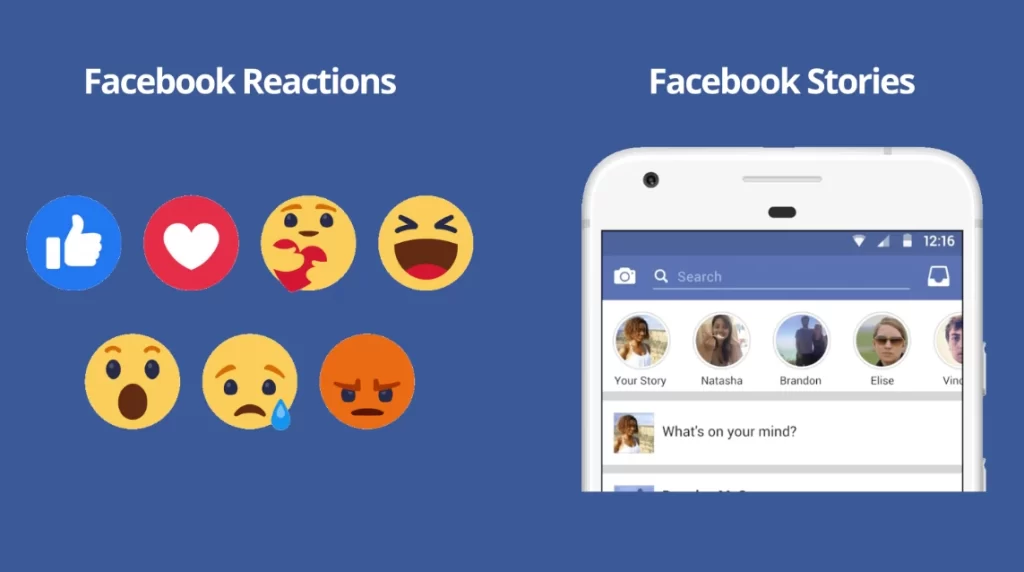
Snapchat has revolutionized the way individuals share their lives on social media. Instagram has already duplicated Snapchat’s story feature, and now Facebook is seeking to do the same. Facebook Stories is now available on iOS and Android in Ireland, with plans to expand to additional foreign regions in the coming months. The “Stories” feature lets users submit photographs and videos that vanish from the News Feed after 24 hours.
Following a series of tests, Facebook determined that having movies play with sound automatically within the News Feed was well received by many people. This functionality will only be available if your phone’s sound is turned on. If your phone is set to “Silent” or “Vibrate,” you must still manually enable the video’s sound. Other improvements included in this release include vertical videos automatically extending to full screen and a video playing at the bottom of the screen while the user scrolls through the News Feed.
It has been one year since Facebook launched Reactions to enhance user engagement, and Facebook has learned over the last year that any Reaction left on a post is a strong signal that the user was more interested in that post than any other “liked” postings. Currently, every Reaction is treated the same as a Like; however, Facebook is redesigning the News Feed to prioritize Reactions over Likes. If a user picks a Reaction to a post, even if it is an “Angry” Reaction, Facebook will begin to display related articles in the News Feed. If you want to see fewer posts of a given type, do nothing; do not Like or React to that post.
In an attempt to replicate Snapchat’s popularity, Facebook has added Stories to the main Facebook app. Users will now see circular icons with their friends’ profile images at the top of the News Feed as a result of the recent software update. These symbols indicate a recent “story” produced by friends, which may include photographs, video, drawings, and special camera effects. These stories will be removed within 24 hours and replaced with new ones. Users may become more graphic in how they choose to communicate their activities and personalities with their friends by using Facebook Stories. The addition of Stories adds a second News Feed within the app.
Facebook has been discreetly and gradually testing a new tool called ‘Explore Feed,’ which would assist users in discovering material outside of their friends and Pages that they currently follow. This feature is being gradually rolled out, so it may not be available to all users just now, but it will be. The ‘Explore Feed’ is accessible via the menu navigation. When searching for content, Facebook wants users to stay on the site or in the app rather than using Google or other apps. The information in “Explore Feed” is comparable to that of your friends and Pages that you have followed.
Users may build 3D digital items using Facebook’s Oculus Medium sculpting tool or Facebook Spaces VR hangouts, and with this recent upgrade, share them to the News Feed. After a 3D post is made and uploaded to the News Feed, other users may interact with it by seeing it from various perspectives, zooming in, and even engaging with elements such as doors. Facebook also intends to provide third-party VR developers the ability to allow its users to post their work in the News Feed. Facebook thinks that this is the first step toward sharing a new sort of material that will evolve.
Users have complained to Facebook about the number of spam-related postings that encourage or promote interaction through their posts. For example, you may invite people to vote with responses or to comment, tag, share, or otherwise interact with the content. Pages and businesses that utilize ‘engagement bait’ methods might expect a considerable decrease in reach. This modification will not affect genuine posts, such as asking for guidance, raising awareness of a missing kid, or raising money for a worthy cause, according to Facebook.
Facebook Algorithm Changes:2018
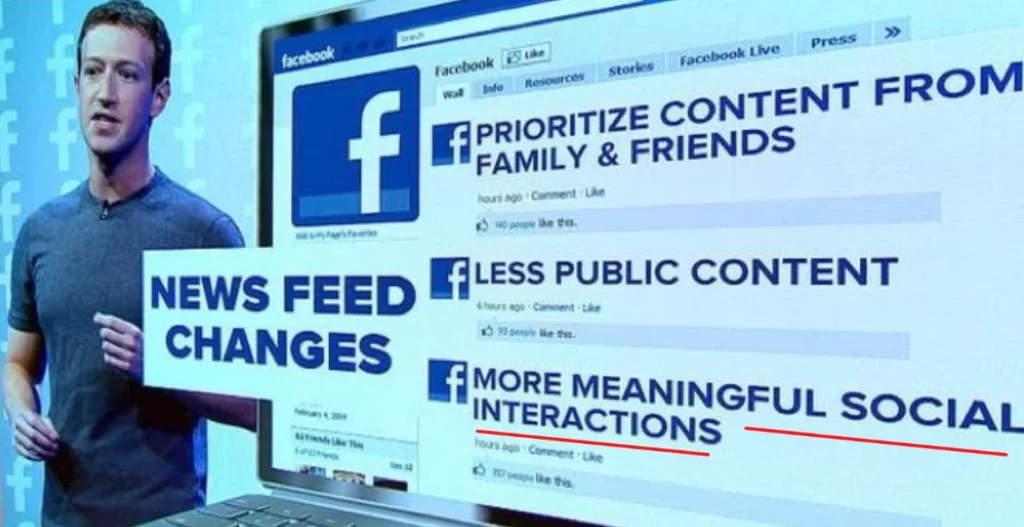
Publishers and marketers may find themselves reconsidering or scaling down their social strategy as a result of this latest upgrade. Facebook is committed to offering a high-quality experience that promotes the well-being of its users. Their research has revealed that real connections between friends are what foster a great sense of well-being.
Following on from last month’s upgrade, which promised to give more meaningful experiences on the News Feed, this new version aims to provide news articles in your timeline that originate solely from trustworthy sources. Facebook polled users to find out which news providers are the most respected and trustworthy. This update’s tests will begin in the last week of January and will continue throughout the year. Pages that have been rated trustworthy by these surveys may experience a gain in distribution, whilst pages that have not been regarded as trustworthy may see a decrease in distribution and audience reach.
Recent adjustments this month have had a significant impact on everyone’s News Feed, with the most recent upgrade emphasizing well-trusted news sources. This recent edition expands on that, with a greater emphasis on local news. If you follow a local news Publisher or if a friend posts a local news article, that post may appear higher in your News Feed. Users want to remain in touch with family and friends, but they also want to know what’s going on in their local areas.
Little is known about this upgrade or how it will function, but users may expect to view and share 3D photographs in status updates in the coming months. Because Facebook currently supports 360-degree photographs, this new function should come as no surprise. Facebook hopes that this upgrade will provide a more immersive experience for its users and the material they post in their news feeds.
According to TechCrunch, Facebook will begin demoting connections to trashy news sites that scrape the material of other sites with little to no change of their own. These sites typically publish current news information from more respectable sites and then surround that content with a slew of advertisements. Users may anticipate seeing fewer and fewer of these sorts of links in their News Feeds. Facebook is expecting that by reducing traffic to these sites, fraudsters would be less likely to engage in these tactics.
According to Mark Zuckerberg’s comments, Facebook will demote anything that is ‘borderline’ or ‘near to’ the policy line of forbidden content. A post that contains objectionable words but does not fall under hate speech, for example, will be downgraded in distribution. The same is true for sexually provocative photographs or those that tease nudity without completely revealing it. This modification should also apply to posts that disseminate or promote disinformation, including those from across the political spectrum. Although this modification is presently in effect, it is only visible to a select group of users, pages, and groups. Expect it to become increasingly common soon.
Facebook Algorithm Changes:2019
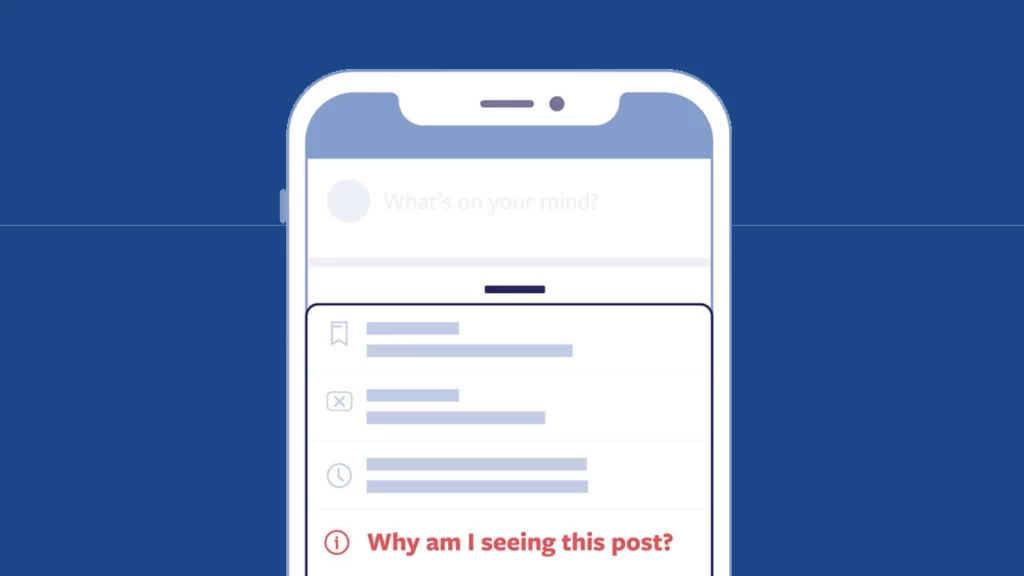
To combat Facebook’s reputation as a proponent of misinformation and fake news on the internet, the social media giant has introduced a new metric known as ‘Click-Gap,’ which will analyze sites and posts that generate a high number of clicks and links on Facebook compared to the rest of the internet. If a post appears to be popular solely on Facebook and nowhere else online, its reach in the News Feed will be reduced. This upgrade will be detrimental to websites whose primary objective is for their material to become popular on Facebook. The upgrade should reduce the amount of propaganda and disinformation that circulates on the network.
Another Facebook algorithm upgrade to ensure that your News Feed is populated with high-quality and valuable items. According to recent polls, Facebook now has important signs it can use to identify which of your friends you connect and engage with the most, who you’re spending time with through tagged images and check-ins, and more. This same update will also push links to material in which you have already demonstrated an interest based on past participation. Pages that rely on clickbait links and spammy material will most certainly suffer as a result of this upgrade.
Facebook aims to reward video makers who provide high-quality content for their audiences. Many modifications will be done in the next months to distribute more unique films that interest viewers beyond the one-minute mark, particularly videos longer than three minutes. Repeat viewings of videos will result in increased distribution in the News Feed. Films that lack originality or value, as well as videos and Pages that promote sharing schemes, will be downgraded in distribution.
Facebook will begin de-ranking posts that include inaccurate health information or risky, dramatic ‘cures’ in a new upgrade. This change will also apply to postings that promote or sell a product that makes health-related claims, such as a weight-loss medication. Recent DIY ‘cures’ that have been known to be lethal (like drinking bleach) have been blocked on sites like Amazon and YouTube, but Facebook just intends to limit the propagation of such material. Though it promises to reduce the visibility of personal posts as well as posts from Pages, it’s unclear how successful and ubiquitous this change will be.
Beginning in August, Facebook’s mobile News Feed will have a new design. The modification, which affects Page posts and advertisements, will only display three lines of text for a particular post before displaying the ‘See More’ option. The modification will also reduce the aspect ratio of any linked media in the post – images and videos will now have a 4:5 aspect ratio. Because of the limited content view in the mobile News Feed, Pages should be able to fit more adverts into consumers’ feeds.
Facebook Algorithm Changes:2021
The News Feed algorithm has always sought to personalize each News Feed to the user based on the sorts of content and profiles they engage with regularly. Facebook is now testing a new tool that gives users greater control over what appears in their individual News Feeds. Users may select between three options in the new ‘feed filter bar’: algorithmically rated material, most recent postings, and updates from their favorite friends and other pages they follow. Viewing the most recent posts and updates from friends is a function that exists, but it is difficult to discover. The feed filter bar makes it much easier to find and use these adjustments.
Following questions from legislators about Facebook’s participation in the attack on the United States Capitol, the company plans to make a series of modifications to users’ News Feeds, focusing on postings that users want to read and that inspire them. Facebook will conduct direct polls to determine the sorts of postings people want to see from friends, groups, and Pages. Other indications, such as Close Friends or Favorite lists, will also be considered by Facebook when determining which sorts of postings to prioritize in the News Feed.
How Does the Facebook Algorithm 2024 Work?
So, where does this all leave us in 2024? First and foremost, the News Feed is no longer available. What you see when you navigate through Facebook is now simply referred to as Feed.
According to Facebook, Feed ‘offers you important and useful news.’ As of 2024, the Facebook algorithm uses three primary ranking signals to determine what such articles could be:
- Who posted it: You’re more likely to see material from people and businesses with whom you interact.
- Type of content: If you engage with video the most, you’ll see more of it. You will view more photographs if you interact with them. You get the picture.
- Interactions with the post: The feed will highlight posts with a high level of interaction, particularly from individuals you connect with frequently.
To decide where a post shows in your feed, it is rated based on five major signals. Facebook also provides users with choices for training the Facebook algorithm and customizing their feed:
- Favorites: Users can add up to 30 individuals and pages to Favorites. Posts from these accounts will be prioritized in the Feed. To access Favorites, go to Facebook’s top right and select the down arrow, then Settings & Privacy, and finally News Feed Preferences.
- Options for in-feed: When you click on any post, you’ll see the option This is something I don’t want to see. Then choose Hide Post to notify Facebook that you want fewer posts of that type in your Feed. Hide an ad is a similar option for advertising. Facebook will next present you with several alternatives for indicating why you wish to hide the ad. This will assist Facebook in determining which kind of advertising you like to hear from and which you prefer to avoid.
Finally, Facebook will delete content that violates its Community Standards. They may also “delete or limit audiences for specific types of sensitive content,” such as nudity, violence, and violent content.
Facebook Algorithm’s Ranking Factors
The Facebook algorithm guarantees that all Facebook users receive the most relevant updates, news, and information. It is not a simple Facebook algorithm to decipher, however, some ranking elements are generally understood.
Inventory
As a result, the first consideration is inventory. It includes all of the platform’s content. It might be anything, such as a post from a close friend, or family, all the organizations you’ve joined, and all the pages that fit under the inventory example.
In a nutshell, your inventory consists of all the posts that are currently accessible for the show in your News Feed.
Signals
Signals are an important component of the Facebook algorithm that informs Facebook about the post. Signals are further classified into two types.
- Active Signals: They encourage participation in your postings, such as likes, shares, and comments.
- Passive signals are non-active measures such as view time, time posted, and narrative kind.
Predictions
Predictions consider not only your Facebook profile, likes, dislikes, and the posts you are interested in, but also your Facebook profile, likes, dislikes, and the posts you are interested in. As a result, it can only display material that you are likely to interact with. Predictions are essentially your reaction to the content.
Relevancy Score
Facebook assigns ratings to all material on the platform, indicating how relevant the item is to the user. The higher the score, the more likely it is that the material will appear in your news stream.
Make the Most of Facebook Algorithm Changes
Having a plan behind your post is one approach to making the most of the Facebook algorithm updates. Bloggers, for example, may provide general material on Facebook focusing on an event or current topic to increase interaction and reach.
Facebook has just established some new guidelines for what they desire on their site. What does this have to do with you? If you want to stay connected with friends and family while also growing your Facebook audience, you need to make some modifications as a marketer:
- Increase your involvement. You can’t expect to acquire more likes, comments, and shares until you put in the effort. This implies more posts, likes, and shares. Also, don’t forget to share additional images and monitor your Facebook stats.
- With some videos, you can break up your day. The world is being taken over by video. Why not go on board and offer some challenges to engage your audience?
- Finally, choose quality over quantity.
Tips to Beat the Facebook Algorithm in 2022
Facebook is still implementing algorithm adjustments that will increase the amount of human monitoring and control. The purpose of this adjustment is to reduce the propagation of inaccurate and controversial viewpoints on Facebook. Facebook’s goal is to ensure that people receive material that matches their thoughts and viewpoints, as well as to identify ways to counteract possible misuse that we could not previously.
The Facebook algorithm updates make it more difficult for the platform to be exploited to deceive individuals and give incorrect information. At this stage, you can follow the tips below:
Engage With the Audience
Responding means communicating or interacting. You cannot have a good following if you do not answer from your account to grasp your followers’ preferences, likes, and dislikes. Interaction aids comprehension and comprehension aids in the acquisition of a large number of followers.
Post at the Right Time
Before you submit your work, you should choose the best or most appropriate moment to do so. It is vital to post the material at the appropriate moment. Investigate the best time to post on Facebook to determine the ideal time to publish. Many bloggers publish their material in the morning, which makes sense because they are more likely to be awake, but if you want to reach the most people, you should post at night. While it is tempting to post when you are in the mood, if someone’s Facebook feed is packed with posts from friends and family late at night while they are tucked up in bed preparing to sleep, odds are they are reading their feed while in a state of calm.
Inspire Your Audience
Everyone has a story to tell, and telling those tales is the key to motivating your audience. Remembering your audience and conveying your narrative in a way that resonates with their experiences is the key to becoming a successful storyteller. You can inspire your listeners if you can establish a relationship with them. One of the most effective strategies to engage your readers with your material is to:
- Be unique: Develop your perspective and perspective to provide an idea that no one else has thought about.
- Engage your audience: Pose queries that will elicit a response. With your material, elicit an emotional response.
- Engage in interactive activities: Allow your readers to submit their responses and provide comments on your site.
- Be genuine: Allow your feelings and thoughts to shine through in your article.
- Back up your claims: You must provide facts or data to back up your claims.
Produce Quality Content
The adage ‘content is king’ is more applicable than ever, as consumers are increasingly seeking relevant material to engage with their customers. The more relevant material a firm creates, the more likely it is to convert a potential consumer into a customer.
It is not enough to just create content. Your content must be of the highest caliber. This is frequently tough to quantify, but there are a few things you can do to assist in increasing the quality of your material. Examine the text for spelling and grammar errors, as well as if it is overly repetitious, badly structured, or does not make sense. Quality content will highlight the finest of your organization and make it easy for your clients to regard you as a go-to source for their requirements.
Create Short and Engaging Videos
The most essential thing to remember when creating a video to market your product, business, or service is to do it properly and with an entertaining video. Have you experimented with making videos for your brand on Facebook? If you answered yes but did not receive the maximum reach, there might be two reasons:
- You’ve posted lengthy videos.
- Your video material isn’t compelling enough to draw in viewers.
People enjoy viewing short movies, but if your videos are too long, they will become bored and leave without watching. To capture your audience’s interest, try making short films that focus on your topic.
In addition to all these tips, you can beat the Facebook algorithm by working with a performance marketing agency.



